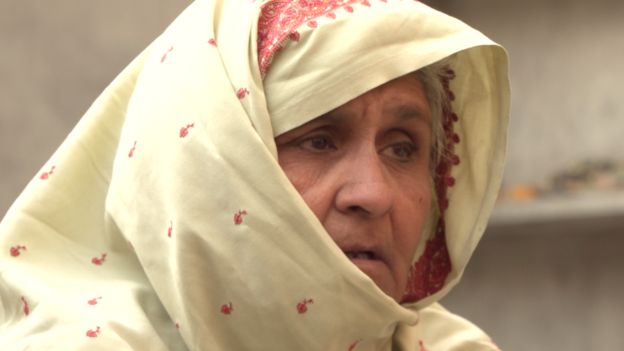Web Guider
728
Web Search
Jan 27, 2018
Transformation of DNA
- Remove a trace of E. coli cells from the glycerol stock vial with a sterile toothpick or inoculating loop, and streak it out on LB-agar plates containing an appropriate concentration of the relevant selective antibiotic(s) (see Antibiotics). If the host strain has already been cultured and stored at 2–8°C (cultures can be stored at 2–8°C for up to 3 months without any significant loss of viability), streak out bacteria from those stocks.
- Incubate at 37°C overnight.
- Pick a single colony and inoculate 10 ml LB medium containing relevant antibiotic(s). Grow overnight at 37°C.
- Add 1 ml overnight culture to 100 ml prewarmed LB medium containing the relevant antibiotic(s) in a 500 ml flask, and shake at 37°C until an OD600 of 0.5 is reached (approximately 90–120 min).
- Cool the culture on ice for 5 min, and transfer the culture to a sterile, round-bottom centrifuge tube.
- Collect the cells by centrifugation at low speed (5 min, 4000 x g, 4°C).
- Discard the supernatant carefully. Always keep the cells on ice.
- Resuspend the cells gently in cold (4°C) TFB1 buffer (30 ml for a 100 ml culture) and keep the suspension on ice for an additional 90 min.
- Collect the cells by centrifugation (5 min, 4000 x g, 4°C).
- Discard the supernatant carefully. Always keep the cells on ice.
- Resuspend the cells carefully in 4 ml ice-cold TFB2 buffer.
- Prepare aliquots of 100–200 µl in sterile microcentrifuge tubes and freeze in liquid nitrogen or a dry-ice–ethanol mix. Store the competent cells at –70°C.
Posted by
DNAworld
at
10:03:00 AM
0
comments
![]()
![]()
A quick DNA purification protocol
A quick "dirty" prep is usually sufficient, while some genotyping may work better with highly purified DNA. Determine empirically which protocol works best for your genotyping.
1. NaOH extraction (quick "dirty" DNA preparation). Reference: Truett GE et al. 2000. Biotechniques 29(1):52-54
- Cut 2mm of tail and place into an Eppendorf tube or 96-well plate.
- Add 75ul 25mM NaOH / 0.2 mM EDTA.
- Place in thermocycler at 98ºC for 1 hour, then reduce the temperature to 15°C until ready to proceed to the next step.
- Add 75ul of 40 mM Tris HCl (pH 5.5).
- Centrifuge at 4000rpm for 3 minutes.
- Take an aliquot for PCR (use 2 ul undiluted, or 2 ul of a 1:100 dilution/reaction).
Posted by
DNAworld
at
10:00:00 AM
0
comments
![]()
![]()
DNA Isolation from Blood Samples
1. Obtain 65-100 µl of blood by retro-orbital bleed with a heparinized microcapillary tube. Expel blood immediately into a 1.5 ml microfuge tube containing 20 µl of 10 mM EDTA. Mix immediately to prevent clot formation. Store on ice until processing.
2. Add 200 µl lysis buffer to each tube and vortex to suspend evenly.
3. Microfuge 25 seconds at 16000xg to pellet nuclei.
4. Remove and discard supernatant and repeat steps 2-4 two more times, or until no hemoglobin remains.
5. Resuspend nuclear pellet in 100 µl PBND with 60 µg/ml proteinase K and incubate at 55 C for 60 minutes (or overnight, if convenient).
6. Heat samples to 97 C for 10 minutes to inactivate proteinase K.
7. Add 1-5 µl of DNA solution for a 25 µl PCR reaction.
Reagents:
1) Lysis buffer
- 0.32 M sucrose
- 10mM Tris-HCl (pH 7.5)
- 5 mM MgCl2
- 1% v/v Triton X-100
2) PBND (PCR buffer with nonionic detergents)*
- 50 mM KCl
- 10 mM Tris-HCl (pH 8.3)
- 2.5 mM MgCl2
- 0.1 mg/ml gelatin
- 0.45% (v/v) Nonidet P40
- 0.45% (v/v) Tween 20
- Autoclave to sterilize and dissolve gelatin.
- Store frozen.
*Add proteinase K (60 µg/ml) immediately prior to use).
(Adapted from Higuchi, R. (1989) Amplifications 2: 1-3)
Posted by
DNAworld
at
10:00:00 AM
0
comments
![]()
![]()
Pakistan Zainab murder: DNA suggests suspect in other case was 'innocent'
Pakistani officials say they will investigate allegations police carried out an unauthorised killing of a man wrongly accused of murdering a child.
Police shot Mudasir, accused of killing five-year-old Iman Fatima, in February 2017, saying he tried to escape.
However, a BBC Newsnight investigation has uncovered allegations that Iman's real killer is still at large.
DNA tests suggest Iman was killed by the same man suspected of murdering another child this month.
The rape and murder of six-year-old Zainab Ansari earlier this month sparked outrage and protests across Pakistan.
Police working on the investigation into Zainab's murder have discovered DNA traces matching those found in seven other attacks on young girls in the same city.
Out of the seven attack victims, four - including Iman - were murdered.
Until now, police and Iman's family thought her case had already been solved - but her family now believe the real killer is still on the run, while Mudasir was innocent.
'Trying to escape'?
Iman Fatima had been playing outside in the street with her five-year-old cousin Adeel.
Sitting next to his father, Adeel told the BBC, "The kidnapper made me stand against the wall and took Iman Fatima away. He took her upstairs, put her in a sack and took her away."
Adeel's memory of the incident is at times vague and confused but his family say after the abduction, despite his age, he identified the house his cousin had been taken into, and later the man responsible.

The suspect was 21 year-old Mudasir, a factory worker who had moved to Kasur with his family around two years earlier.
What happened next is disputed. According to one police version Mudasir was killed resisting arrest. Another senior police officer told the BBC he was taken into custody where he confessed, and then was killed "trying to escape."
But in an exclusive interview with the BBC, Mudasir's family said they believed police killed him despite knowing he wasn't the killer because they were not able to find the real culprit.
Human rights groups have criticised police in Pakistan for carrying out what are known locally as "police encounters" - extra judicial killings that are then covered up as incidents where suspects resisted arrest.
Analysts say police often carry out "encounter killings" because of the low conviction rate in Pakistani courts.
'They killed my son'
After the discovery of Iman Fatima's body local residents began to protest against the perceived inaction by authorities. A month earlier in January 2017, another 5-year-old girl, Ayesha Asif had also been sexually assaulted and murdered.
Mudasir's mother Jamila Bibi told the BBC, "I feel as if I have lost everything. They killed my son."
The family moved out of Kasur just days afterwards, "No-one in the neighbourhood would even talk to us" Jamila Bibi added tearfully.

Mudasir's family say he was taken into custody the same evening Iman Fatima was abducted and killed. They allege they then went with police to recover his body from a local hospital.
Police officials in Kasur told the BBC that Mudasir had been positively identified as the suspect by the girl's cousin Adeel.
Speaking to the BBC, a relative of Iman Fatima said police had called him into the police station to hear Mudasir confess to the killing.
But the DNA evidence examined as part of the enquiry into Zainab's murder later suggested Mudasir was not the killer.
Following Mudasir's death in February 2017, another four young girls were attacked, including Zainab. Three of them died, one is still in hospital. Traces of the same DNA were found on their bodies as of Iman Fatima.
When presented with the allegations uncovered by the BBC, Malik Ahmad Khan, spokesman for the Punjab Government, told the BBC that authorities in the province would carry out a "full-fledged inquiry" and that those responsible for any "extrajudicial killing won't be spared."
Iman Fatima's father told the BBC, "I'm so worried - the real killer is still roaming free, and an innocent man has been killed."
"I am so angry with the police I can't explain. We want justice and we want the actual culprit caught."
Posted by
DNAworld
at
9:57:00 AM
0
comments
![]()
![]()
Ancient DNA tests solve Manchester mummy sibling mystery
A pair of Egyptian mummies nicknamed "Two brothers" by a museum are actually half-brothers, according to research using ancient DNA.
Scientists from the University of Manchester used DNA from the mummies' teeth to establish that they have the same mother but different fathers.
"I am sure the brothers would be very proud of us," said Dr Konstantina Drosou, from the university.
The pair are Manchester Museum's oldest mummies and date back to 1800BC.
Egyptologists have long debated whether the mummies of two elite men - Khnum-nakht and Nakht-ankh - were related ever since they were discovered in 1907.
A university spokesman said two years ago "ancient DNA" was extracted from their teeth to solve the mystery.
Dr Konstantina Drosou, from the university's School of Earth and Environmental Sciences, tested the samples using DNA sequencing - the process used to determine the order of the four chemical building blocks that make up the genetic information from a given living organism.
"It was a long and exhausting journey to the results but we are finally here," she said.
"I am very grateful we were able to add a small but very important piece to the big history puzzle and I am sure the brothers would be very proud of us. These moments are what make us believe in ancient DNA."
The pair's joint burial site, later called The Tomb of The Two Brothers, was discovered at Deir Rifeh, a village 250 miles (400km) south of Cairo, by Egyptian workmen directed by early 20th Century Egyptologists, Flinders Petrie and Ernest Mackay.
Hieroglyphic inscriptions on the coffins indicated that both men had mothers with the same name, Khnum-aa.
Posted by
DNAworld
at
9:55:00 AM
0
comments
![]()
![]()
Alcohol may cause cancer by damaging stem cell DNA
Drinking alcohol may cause irreversible damage to the DNA of stem cells and increase the risk of developing certain cancers, a new study has revealed.
Using genetically modified mice, British scientists found that acetaldehyde, a toxin produced as the body processes alcohol, can slice through the DNA within blood stem cells and cause permanent damage.
In the study, published recently in the journal Nature, the mice lost their ability to reproduce fresh blood after being given diluted alcohol for ten days.
Sequencing the genome of the stem cells indicated that their DNA had been scrambled to the point that the cells no longer functioned.
When healthy stem cells are faulty, they can give rise to cancerous cells, particularly in the mouth, throat, oesophagus, breast and so on.
The effects of such damage can be neutralized, however, by the body's two-layer defence mechanism. The first layer is a protective enzyme called aldehyde dehydrogenase 2 (ALDH2), which prevents build-ups of acetaldehyde, and the second repairs the DNA damage.
In the study, mice lacking ALDH2 suffered four times as damage compared with the other ones.
About 8 percent of the world's population, mostly those of East Asian ancestry, are born with an deficiency in ALDH2.
"Our study highlights that not being able to process alcohol effectively can lead to an even higher risk of alcohol-related DNA damage and therefore certain cancers," said Ketan Patel, who led the research at the MRC Laboratory of Molecular Biology in Cambridge.
Posted by
DNAworld
at
9:53:00 AM
0
comments
![]()
![]()
Subscribe to:
Posts (Atom)


